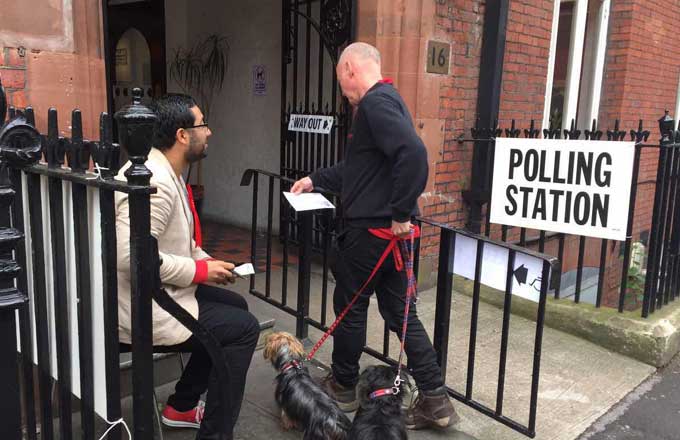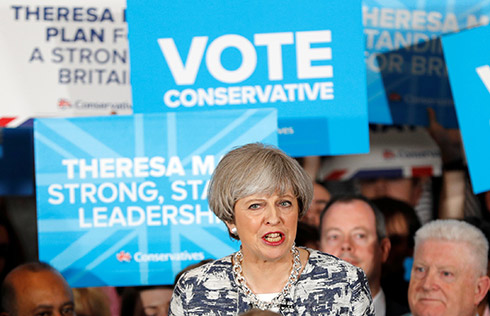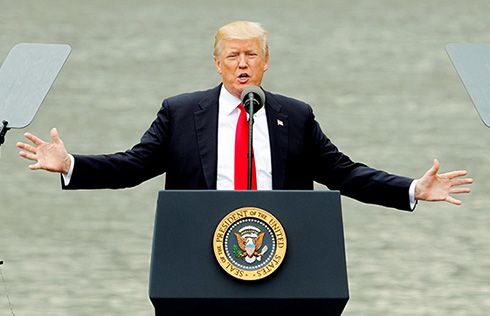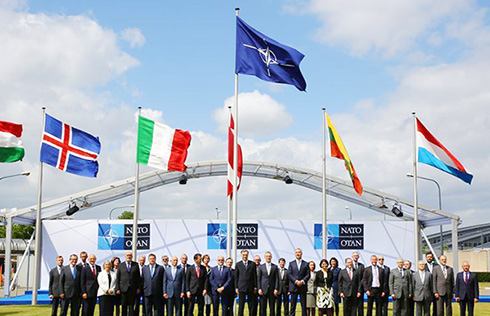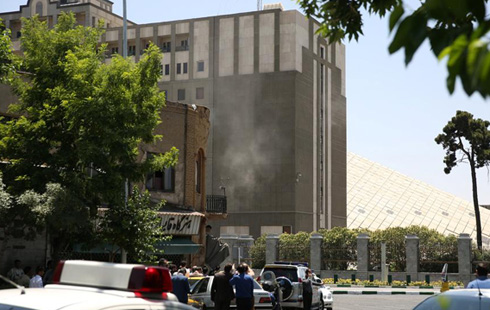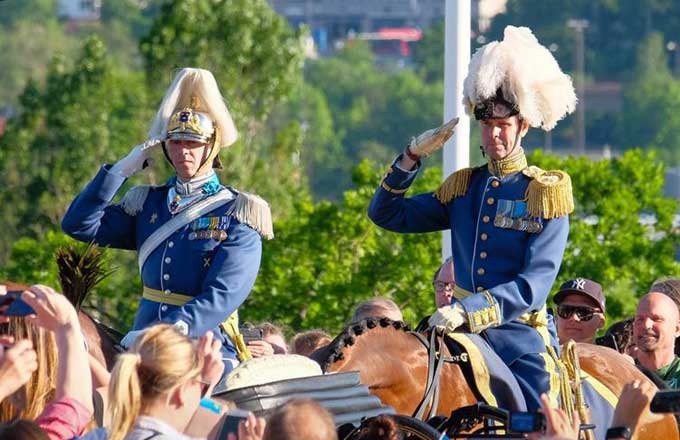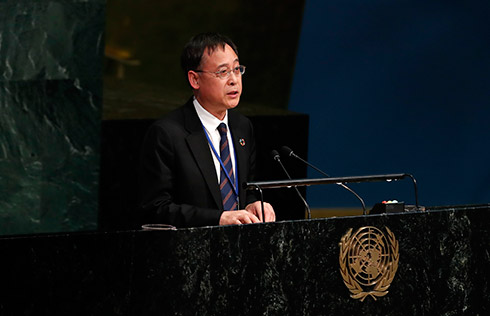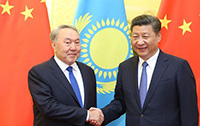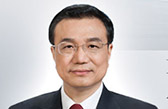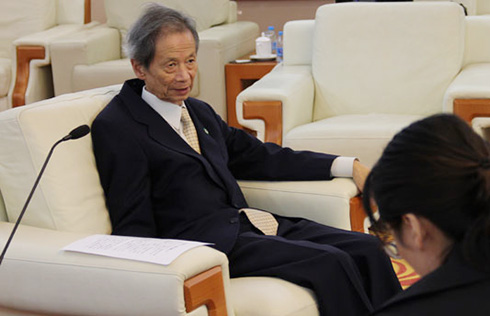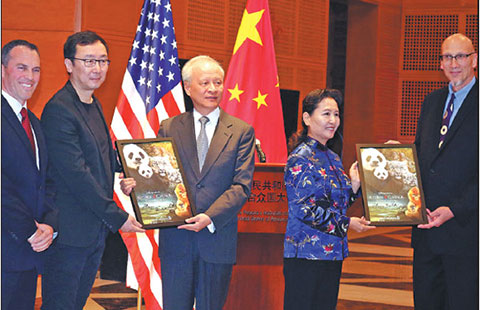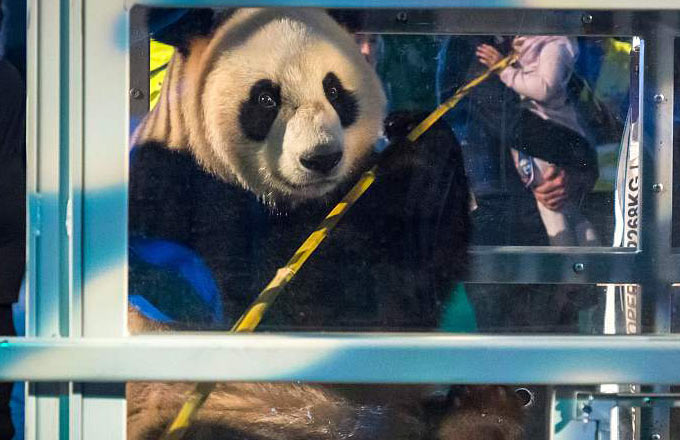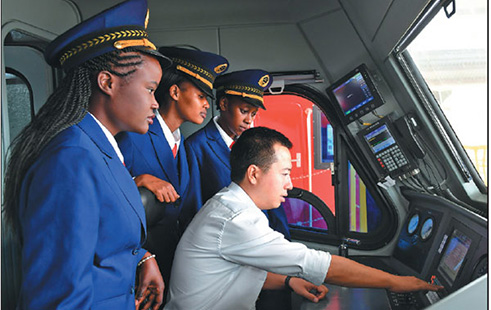It all began in a Shanghai hotel
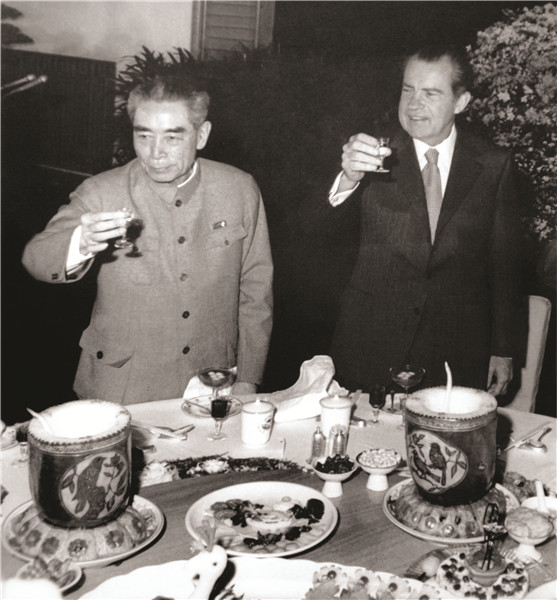 |
|
Then-Chinese premier Zhou Enlai and US president Richard Nixon attend a banquet at Jinjiang Hotel's Grand Hall in 1972. [Photo provided to China Daily] |
Shanghai may have impressed many as China's metropolis of finance, fashion and food, but when it comes to Sino-US relations, the municipality displaced Beijing as the scene of a milestone event.
A 1,200-square-meter hall in the center of Jinjiang Hotel in Shanghai's downtown area is famous for being the birthplace of Sino-US relations. It was there that then-US president Richard Nixon signed the Shanghai Communique, also known as the Joint Communique of the United States of America and the People's Republic of China, at the conclusion of his China trip in 1972.
The weeklong visit to the country by Nixon, who also stopped for meetings in Beijing and Hangzhou, Zhejiang province, was the first made by a US president to the People's Republic of China, the first key step in normalizing relations between the two countries.
Surrounded by an ever-green lawn with three main buildings, the hotel was previously named Cathay Mansion and was the home of a Jewish banker who built it in 1925. It was taken over by the municipal government and run as a State-owned luxury hotel from 1951.
Before the Shanghai Communique was signed at its Grand Hall in 1972, Jinjiang Hotel had hosted more than 300 visits by state leaders from around the world. Nevertheless, the hotel faced "an unprecedented challenge" when Nixon visited Shanghai in 1972, former hotel staff member Qiu Huanxi recalled.
"We were told about the visit less than one week before (the arrival of Nixon)," said Qiu, who was on the team tasked with receiving the US president.
Qiu's team of 14 hotel staff members included a receptionist, a barber, a waiter and a doorman. Backing this "vanguard team" was a large group made up of other staff members as well as members of the public, according to the hotel's archives.
Most of the food and beverages consumed by the US president was flown in from the US. It was only after the release of the Communique that Nixon ate three dishes from the hotel's Chinese restaurant. Those dishes included chicken, fried shrimp balls and broad beans fried with mushrooms.
Unlike at the state banquet with premier Zhou Enlai, where he used chopsticks, Nixon used a knife and fork to eat these three dishes, Qiu said.
The room Nixon stayed in was the presidential suite on the 16th floor of the hotel's main building, then considered the best hotel room in the city. The suite has since undergone multiple renovations and is today regularly occupied by local celebrities and high-profile personalities.
Nixon revisited Jinjiang Hotel during his third trip to China in 1993, though that time he did not stay on the premises. Four years later, the Grand Hall was reconstructed and expanded to 10 times its original size.
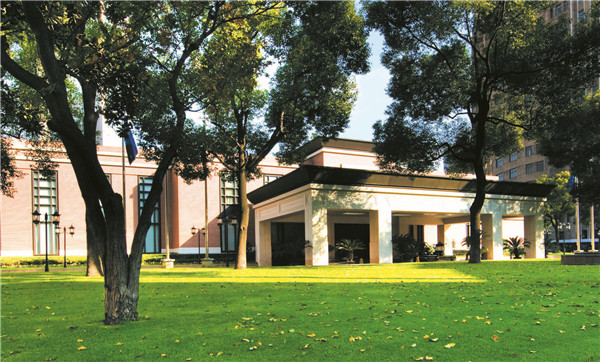 |
|
The hall is seen today.[Photo provided to China Daily] |






